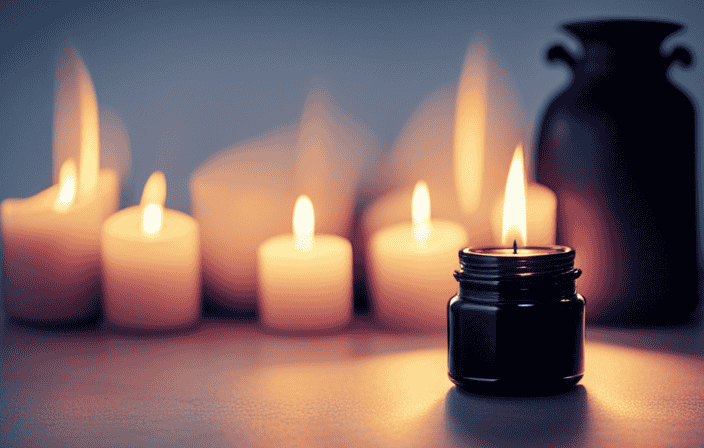Spirituality
Starting Your Spiritual Journey: Self-Reflection, Growth, And Connection

Have you ever found yourself mesmerized by the boundless expanse and powerful rhythm of the waves while standing at the edge of a vast ocean?
Starting a spiritual journey is like stepping into that ocean, ready to dive deep into self-reflection, personal growth, and connection.
It’s a journey of exploration, where we navigate the depths of our beliefs, values, and interests.
With an open heart and a willingness to embrace new experiences, we can connect with our divine essence and embark on a path of self-discovery, transformation, and integration.
Join me as we embark on this beautiful journey together.
Key Takeaways
- Begin with self-reflection and exploration of beliefs, values, and interests.
- Engage in practices like meditation, mindfulness, and self-inquiry.
- Be open to new experiences and seek guidance from mentors or spiritual leaders.
- Embrace personal growth and deepening your connection with the divine.
What is it?
I believe that the first step in starting my spiritual journey is to engage in self-reflection. This involves exploring my beliefs, values, and interests, and beginning to practice meditation, mindfulness, and self-inquiry.
Self-reflection allows me to understand myself on a deeper level and uncover what truly matters to me. It is a journey of self-discovery where I can confront my fears, insecurities, and limiting beliefs.
By exploring my beliefs, values, and interests, I can align myself with what resonates with my soul and brings me joy.
Meditation, mindfulness, and self-inquiry provide the tools to quiet the mind, cultivate present moment awareness, and explore the depths of my being. Through these practices, I can connect with my inner wisdom and gain clarity on my path.
It is a process of unraveling the layers of conditioning and connecting with my authentic self. This journey is not about reaching a destination, but rather about embracing personal growth, deepening my connection with the divine, and continually engaging in self-discovery, transformation, and integration.
Self-Reflection
Engaging in self-reflection allows for a deeper understanding of oneself and promotes personal growth and connection with the divine. It is a powerful tool that enables us to explore our beliefs, values, and interests, providing a solid foundation for our spiritual journey. Through self-reflection, we can uncover our strengths and weaknesses, our passions and purpose, and gain clarity on what truly matters to us.
To assist in this process, I have created a table that highlights the benefits of self-reflection:
| Benefits of Self-Reflection |
|---|
| Promotes self-awareness |
| Enhances personal growth |
| Facilitates decision-making |
| Deepens connection with the divine |
| Cultivates gratitude |
By engaging in self-reflection, we create space to examine our thoughts, emotions, and experiences, allowing us to gain valuable insights about ourselves. It is a practice of compassion and acceptance, where we embrace our imperfections and celebrate our strengths. Through self-reflection, we can embark on a transformative journey of self-discovery, leading us to a deeper connection with our spiritual self and the world around us.
Exploring Beliefs and Values
Exploring my beliefs and values allows me to gain a deeper understanding of myself and cultivate a stronger connection with the divine. It is through this exploration that I begin to unravel the layers of conditioning and societal influence that have shaped my perspective.
By examining my beliefs and values, I am able to discern what truly resonates with my authentic self and what may no longer serve me. This process can be both liberating and challenging, as it requires me to confront any inconsistencies or contradictions within myself.
However, it is through this introspection that I can align my beliefs and values with my actions, leading to a greater sense of integrity and purpose. As I continue on my spiritual journey, I am open to the evolution of my beliefs and values, embracing growth and transformation along the way.
Seeking Guidance
Seeking guidance from mentors or spiritual leaders has been instrumental in my spiritual journey. They have provided me with insight and support as I navigate my path towards self-discovery and connection with the divine.
These wise individuals have walked the path before me and have a wealth of knowledge and experience to share. They have helped me explore different spiritual practices, deepen my understanding of myself, and connect with others on a similar journey.
Their guidance has opened my eyes to new perspectives and challenged me to question my beliefs and values. Through their wisdom and support, I have been able to embrace personal growth and find a sense of purpose and meaning in my life.
Their presence has been a guiding light, illuminating my path and helping me navigate the ups and downs of my spiritual journey. I am forever grateful for their guidance and the profound impact they have had on my life.
Embracing Personal Growth
https://www.youtube.com/watch?v=8zO6kfAzjkE
I’ve embraced personal growth by challenging my beliefs and values and continuously pushing myself to step outside of my comfort zone. It can be intimidating to confront our own limitations and confront the things that hold us back, but it is through this process that we truly grow and evolve on our spiritual journey.
Here are a few ways I have embraced personal growth:
-
Self-reflection: Taking the time to examine my thoughts, emotions, and actions has allowed me to gain a deeper understanding of myself and the patterns that shape my life.
-
Seeking new experiences: Stepping outside of my comfort zone and trying new things has opened up new perspectives and expanded my horizons.
-
Embracing challenges: Instead of shying away from difficult situations, I have learned to embrace them as opportunities for growth and transformation.
-
Cultivating self-compassion: By practicing self-compassion, I have learned to be kind and forgiving towards myself, allowing me to grow and evolve with love and acceptance.
Embracing personal growth on my spiritual journey has been a transformative and empowering experience. It has allowed me to shed old beliefs and limitations and step into a more authentic and fulfilling life.
Connecting with the Divine
To deepen my connection with the divine, I actively engage in practices that foster self-reflection, meditation, and mindfulness. These practices allow me to quiet my mind, open my heart, and cultivate a deeper sense of awareness and presence. Through self-reflection, I am able to explore my beliefs and values, and align them with the divine wisdom that resides within me. Meditation serves as a doorway to transcend the limitations of the ego and connect with a higher power. It is in these moments of stillness that I find solace and guidance. Mindfulness, on the other hand, helps me bring a sense of sacredness to my daily activities, allowing me to experience the divine in the mundane. By consistently engaging in these practices, I am able to deepen my connection with the divine and navigate my spiritual journey with grace and love.
| Practice | Benefits |
|---|---|
| Self-Reflection | Gain clarity and align beliefs with the divine |
| Meditation | Transcend ego and connect with a higher power |
| Mindfulness | Find sacredness in everyday life |
| Gratitude | Cultivate appreciation and joy |
| Connection with Nature | Experience the divine in the natural world |
Incorporating these practices into my daily life has allowed me to embrace the beauty of the present moment, find peace amidst chaos, and discover a profound sense of purpose. As I continue on my spiritual journey, I am reminded that the divine resides within me and in all aspects of life. Through self-reflection, meditation, mindfulness, gratitude, and connection with nature, I am able to deepen my connection with the divine and experience a profound sense of love, peace, and interconnectedness.
Self-Discovery and Transformation
Engaging in self-discovery and transformation has allowed me to uncover hidden aspects of myself and embrace personal growth. Through this journey, I have delved deep into my thoughts, emotions, and experiences, gaining a profound understanding of who I truly am. It has been a transformative process, as I have let go of limiting beliefs and patterns that no longer serve me.
In this journey of self-discovery, I have found solace in practices such as meditation and mindfulness. These practices have helped me cultivate a sense of inner peace and stillness, allowing me to observe my thoughts and emotions without judgment. They have also helped me tap into my intuition, guiding me towards the path that aligns with my true purpose.
Additionally, connecting with like-minded individuals and seeking guidance from mentors has been invaluable. It has provided me with a supportive community, where I feel understood and accepted. Sharing our stories and insights has further deepened my self-discovery and allowed for mutual growth.
As I continue on this path of self-discovery and transformation, I am constantly evolving and expanding. I am open to new experiences and perspectives, eager to learn and grow. This journey has taught me the importance of self-compassion and self-acceptance, as I embrace all aspects of myself, both light and shadow.
In summary, embarking on a journey of self-discovery and transformation has been a profound and enlightening experience. It has allowed me to unlock hidden potentials, release limiting beliefs, and embrace personal growth. Through practices like meditation and mindfulness, connecting with supportive communities, and cultivating self-compassion, I continue to deepen my understanding of myself and the world around me. This journey has brought me closer to my true essence and purpose, and I am grateful for the transformative power it holds.
Prioritizing Self-Care
Prioritizing self-care is essential for nurturing my well-being and maintaining balance on my spiritual journey. As I embark on this path of self-discovery and transformation, I recognize the importance of taking care of myself on all levels – mind, body, and soul. This means engaging in practices that nourish and rejuvenate me, allowing me to show up fully for my spiritual growth and connection.
Here are three key aspects of self-care that I focus on:
| Self-Care Aspect | Description | Importance |
|---|---|---|
| Mindfulness | Practicing mindfulness allows me to be present in the moment, observe my thoughts without judgment, and cultivate inner peace and clarity. | By being mindful, I can better understand myself, my emotions, and my reactions, which contributes to my personal growth and transformation. |
| Physical Well-being | Taking care of my body through regular exercise, nutritious meals, and adequate rest supports my overall well-being. | A healthy body provides a strong foundation for spiritual exploration and growth, enabling me to fully engage in practices and maintain a sense of vitality and energy. |
| Emotional Nourishment | Nurturing my emotions involves expressing and processing them in healthy ways, seeking support from loved ones, and practicing self-compassion and self-acceptance. | Embracing my emotions with kindness and understanding allows me to heal and grow, enhancing my spiritual journey and deepening my connection with myself and others. |
By prioritizing self-care, I am able to create a solid foundation for my spiritual journey, ensuring that I am equipped to navigate the challenges, embrace the growth, and fully embody the transformative power of self-discovery.
Frequently Asked Questions
Can I embark on a spiritual journey without any religious beliefs?
Yes, you can embark on a spiritual journey without any religious beliefs. Spirituality is about personal growth, self-discovery, and connection with the divine or higher power, regardless of religious affiliation. It is a journey of the soul, guided by your own inner truth.
How do I know if I am making progress on my spiritual journey?
I know I am making progress on my spiritual journey when I feel a deeper sense of self-awareness, connection with others and the divine, and a continuous growth in my understanding and practice of spirituality.
Is it necessary to have a mentor or spiritual leader to guide me on my spiritual journey?
Having a mentor or spiritual leader can provide guidance and support on your spiritual journey, like a guiding light in the darkness. They can offer wisdom, share their experiences, and help navigate the challenges along the way.
Can I incorporate my existing hobbies and interests into my spiritual journey?
Yes, you can absolutely incorporate your existing hobbies and interests into your spiritual journey. They can become vehicles for self-discovery, connection, and personal growth, enhancing your overall experience and deepening your connection with the divine.
How do I navigate challenges and setbacks on my spiritual journey?
Navigating challenges and setbacks on my spiritual journey requires resilience and self-compassion. I embrace the lessons they offer, seeking support from mentors, practicing self-reflection, and staying open to growth and transformation.
Say hello to Cypress, the soulful wordsmith behind the insightful articles at OurMindAndBody.com. Cypress is a gifted writer who weaves words with grace and precision, using language as a powerful tool to inspire, heal, and uplift the spirits of readers.
With a background in literature and a passion for personal growth, Cypress brings a unique perspective to the world of well-being and spirituality. Having experienced the transformative effects of meditation and yoga firsthand, Cypress is deeply connected to the essence of these practices and their potential to enrich lives.
Spirituality
Becoming A Spiritual Psychologist: Education, Skills, And Career Paths

Did you know that the field of spiritual psychology is rapidly growing, with job opportunities expected to increase by approximately 19% over the next decade?
If you have a passion for understanding the connection between spirituality and mental health, becoming a spiritual psychologist might be the perfect path for you.
In this article, we will explore the education requirements, skills needed, and various career paths available in this rewarding field.
So, let’s dive in and discover how you can embark on a fulfilling journey as a spiritual psychologist.
Key Takeaways
- Education and training requirements include a bachelor’s degree in psychology, and a master’s or doctoral degree in psychology with relevant coursework in developmental, abnormal, and social psychology.
- Personal qualities and skills required include empathy and compassion, fine communication skills, and the ability to balance western psychological principles with eastern philosophies.
- Joining professional organizations in spiritual psychology provides networking opportunities and access to valuable resources, information, and cutting-edge research.
- Career opportunities and settings for spiritual psychologists include private practice, teaching, research, consulting, and non-profit organizations.
Education Requirements
To become a spiritual psychologist, I would need to obtain a bachelor’s degree in psychology and then pursue a master’s or doctoral degree with coursework or training in spirituality. This educational foundation is crucial in understanding the complexities of human behavior and the application of psychological theories. It also provides a solid grounding in developmental, abnormal, and social psychology, which are essential in spiritual counseling.
Additionally, specialized programs focusing on spirituality and psychology, including transpersonal psychology, mystical experiences, and mindfulness practices, can further enhance my understanding in this field.
Alongside the educational requirements, it is vital to emphasize the importance of ethics in counseling. Ethical considerations play a significant role in spiritual counseling and psychotherapy, as maintaining professional boundaries while being emotionally present is essential.
By integrating these elements, I can create a holistic approach to spiritual psychology, ensuring that I provide the best possible care to my clients.
Skills Needed
Empathy and compassion are crucial qualities for a spiritual psychologist, along with active listening and maintaining professional boundaries.
As a spiritual psychologist, my role is to provide a safe and nonjudgmental space for individuals to explore their spiritual beliefs and experiences. Through fine communication skills, I aim to deeply understand their unique perspectives and challenges.
By actively listening, I can fully engage with their stories and emotions, allowing for a deeper level of connection and healing. At the same time, it is essential to maintain professional boundaries, ensuring that I am emotionally present while also respecting their autonomy and privacy.
This delicate balance between empathy and boundaries allows for a transformative therapeutic experience.
Relevant Coursework
Relevant coursework in developmental, abnormal, and social psychology helped me gain a deeper understanding of human behaviors and the application of psychological theories in my practice as a spiritual psychologist. Studying these subjects allowed me to explore the complexities of human development, abnormal psychological patterns, and the impact of social factors on individuals’ well-being.
Additionally, I learned about the role of spirituality in psychology and counseling, which has been crucial in my work with clients seeking guidance and support in their spiritual journeys. Integrating eastern philosophies with western psychology has also been a significant aspect of my training. It has allowed me to approach therapy holistically, taking into account the mind, body, and spirit.
This integration has been essential in helping my clients find balance, meaning, and purpose in their lives.
Gaining Experience
During my educational journey, I actively sought out opportunities to gain hands-on experience in the field of spiritual psychology through internships and supervised practice. This allowed me to apply the knowledge I gained from my coursework in a real-world setting and further develop my skills as a spiritual psychologist.
Gaining experience in the field of spiritual psychology involved the following:
-
Shadowing mentors: I had the privilege of observing experienced spiritual psychologists in their practice. This gave me valuable insights into the practical application of theories and techniques in a therapeutic setting.
-
Wellness coordinators: I also had the opportunity to work as a wellness coordinator in various settings, where I facilitated workshops and programs that integrated psychological principles with spiritual practices. This allowed me to work directly with individuals seeking personal growth and transformation.
-
Clinical practicums and internships: These experiences provided me with hands-on training in conducting assessments, developing treatment plans, and facilitating individual and group therapy sessions. It allowed me to apply my knowledge and skills under the guidance and supervision of experienced professionals.
Overall, gaining experience in the field of spiritual psychology was instrumental in shaping my understanding and competence as a practitioner. It allowed me to integrate theoretical knowledge with practical application and develop the necessary skills to effectively support individuals on their spiritual journey.
Specialized Training Programs
I actively sought out specialized training programs in spiritual psychology to further enhance my knowledge and skills in the field. These programs offered a unique opportunity to delve deeper into the intersection of spirituality and psychology, allowing me to gain a more comprehensive understanding of the human experience.
The benefits of specialized training programs were immense. They provided me with valuable insights and practical tools to effectively integrate spiritual principles into my practice. Additionally, these programs fostered a sense of community and connection with like-minded individuals, creating a supportive network of professionals in the field.
When searching for the right specialized program, I considered factors such as the curriculum, faculty expertise, and the program’s alignment with my personal values and goals. It was important for me to find a program that resonated with my beliefs and offered a holistic approach to spiritual psychology.
Networking Opportunities
Attending professional conferences and workshops has provided me with valuable networking opportunities in the field of spiritual psychology. Building relationships with like-minded professionals has been instrumental in my career as a spiritual psychologist.
These connections have allowed me to exchange ideas, gain insights, and collaborate on research projects. Through networking, I have met individuals who have become mentors, guiding me in my journey and offering support along the way.
The professional conferences and workshops have not only provided a platform for learning but also a space for connecting with others who share a passion for integrating spirituality and psychology. These connections have opened doors to new opportunities, such as speaking engagements, consulting gigs, and even job offers.
Networking in the field of spiritual psychology is crucial for personal and professional growth, as it allows for the sharing of knowledge, experiences, and resources, ultimately enriching our collective understanding of this interdisciplinary field.
Career Opportunities
Exploring various settings and opportunities allows for a diverse range of roles within the field of spiritual psychology. One of the career paths in this field is establishing a private practice, where you can provide one-on-one counseling and support to individuals seeking spiritual guidance. This allows you to create a safe and sacred space for clients to explore their spiritual beliefs and experiences. Another option is teaching, where you can share your knowledge and insights with aspiring psychologists or those interested in integrating spirituality into their lives. This role allows you to inspire and guide others on their own spiritual journeys. Both of these career paths offer the opportunity to make a meaningful impact on people’s lives and contribute to their overall well-being.
| Career Opportunities | |
|---|---|
| Private practice | Providing one-on-one counseling and support to individuals seeking spiritual guidance. |
| Teaching | Sharing knowledge and insights with aspiring psychologists or those interested in integrating spirituality into their lives. |
Steps to Becoming a Spiritual Psychologist
One essential step in the journey towards becoming a spiritual psychologist is obtaining a bachelor’s degree in psychology. This foundational education provides a solid understanding of human behavior and the application of psychological theories.
To further specialize in spiritual psychology, there are three key steps to consider:
-
Pursue a master’s or doctoral degree in psychology with coursework or training in spirituality. This advanced education allows for a deeper exploration of transpersonal psychology, mystical experiences, and mindfulness practices.
-
Gain practical experience through internships or supervised practice. Hands-on clinical practicums and internships provide invaluable opportunities to apply theoretical knowledge in real-world settings.
-
Network with professionals in the field through professional organizations. Joining organizations like the American Society of Spiritual Psychology or the Association for Transpersonal Psychology can offer networking opportunities, access to valuable resources, and the chance to stay updated with the latest research and trends in spiritual psychology.
Frequently Asked Questions
What is the difference between a spiritual psychologist and a traditional psychologist?
A spiritual psychologist differs from a traditional psychologist by incorporating a holistic and introspective approach, integrating spirituality in therapy. This allows for a deeper exploration of the individual’s spiritual beliefs and their impact on mental well-being.
How does spirituality play a role in the therapeutic process?
In therapy, spirituality can play a significant role. It provides a sense of meaning and purpose, and helps clients find solace in times of distress. Connecting with a higher power can offer guidance and support throughout the therapeutic process.
Can someone become a spiritual psychologist without a degree in psychology?
While alternative paths exist, a degree in psychology is necessary to become a spiritual psychologist. It provides the foundational knowledge and skills required to understand human behavior and apply theories, essential in this holistic profession.
Are there any ethical considerations specific to spiritual psychology?
Ethical considerations in spiritual psychology include maintaining client confidentiality, respecting cultural and religious beliefs, and ensuring informed consent. Following a code of conduct helps create a safe and ethical environment for clients to explore their spirituality.
How does mindfulness practice benefit both the spiritual psychologist and the client?
Mindfulness practice benefits both the spiritual psychologist and the client by promoting self-awareness, reducing stress, and fostering a deeper connection to one’s spirituality. It enhances overall well-being and allows for a more holistic approach to therapy.
Conclusion
In conclusion, becoming a spiritual psychologist is a journey of self-discovery and growth.
As I reflect on the path I have taken, I am reminded of the saying, ‘You can’t pour from an empty cup.’
This reminds me of the importance of self-care and personal development in order to effectively support others on their spiritual journeys.
By pursuing the necessary education, gaining practical experience, and staying connected with a supportive network, I am confident that I can make a meaningful impact in this field.
Together, let us embrace the power of spirituality and psychology to create positive change in the lives of others.
Say hello to Cypress, the soulful wordsmith behind the insightful articles at OurMindAndBody.com. Cypress is a gifted writer who weaves words with grace and precision, using language as a powerful tool to inspire, heal, and uplift the spirits of readers.
With a background in literature and a passion for personal growth, Cypress brings a unique perspective to the world of well-being and spirituality. Having experienced the transformative effects of meditation and yoga firsthand, Cypress is deeply connected to the essence of these practices and their potential to enrich lives.
Spirituality
What Does Spiritual Energy Feel Like? Learn Here!
Get ready to discover the gentle warmth and peaceful presence of spiritual energy, leading you on a journey of interconnected vibrations and profound awareness.

Experience spiritual energy as a gentle warmth and peaceful presence, aligning you with interconnected vibrations. Feel tingling sensations and a sense of unity with all beings. This energy manifests as love, light, or deep peace, enhancing your awareness of the unseen universe. Understand the mechanisms of harmonizing energy signatures and practice visualization techniques to hone your sensing abilities. Spiritual awakening leads to profound journeys beyond the physical, connecting you with higher consciousness. Embrace the global awakening towards heightened awareness and interconnectedness. Trust in signs and synchronicities as guidance towards alignment with your true self.
Key Takeaways
- Spiritual energy feels like gentle warmth and peaceful presence.
- It can evoke tingling sensations and interconnectedness with all.
- Often manifests as love, light, or deep peace.
- Enhances awareness of the unseen and unity with the universe.
- Tuning into subtle vibrations and frequencies is key to sensing spiritual energy.
Sensing Spiritual Energy
Sensing spiritual energy involves tuning into subtle vibrations and frequencies beyond the physical domain, allowing you to feel its gentle warmth and peaceful presence. When you open yourself up to this higher self, you may experience a tingling sensation or a sense of interconnectedness with all that exists.
This spiritual energy can manifest as a profound feeling of love, light, or a deep sense of peace that envelops you entirely. As you attune to these subtle energies, you may notice a heightened awareness of the unseen and a unity with the universe.
Connecting with spiritual energy often evokes feelings of inspiration, clarity, and purpose, illuminating your path and guiding you towards a deeper understanding of yourself and your place in the world. By tapping into this higher self and embracing the vibrations of spiritual energy, you can experience a profound sense of harmony and oneness with the cosmic forces that surround you.
Visualizing Quiet Energy

When visualizing quiet energy, focus on creating a sense of calm and steadiness within yourself. Techniques for maintaining a stable energy state through visualization are essential.
Developing visualizations to convey intent can help in achieving the desired energy quality.
Energy Visualization Techniques
Start by picturing a steady, calm, and responsive visualization of quiet energy when practicing energy visualization techniques. These techniques aim to help you connect with subtle energies, bringing you to a higher state of awareness.
By visualizing quiet energy, you can hold it steady and open yourself to external influences. The focus is on establishing a single, steady energy signature within an object through gentle energy connections.
Intermediate techniques emphasize stability and responsiveness in energy, guiding you towards a deeper understanding of energy manipulation. Training your ethereal muscles through step-by-step visualizations enhances the process of quieting energy, allowing you to hone your skills in controlling and directing energy flows.
As you engage in these visualization techniques, remember to stay present and attuned to the subtle shifts in energy around you, fostering a deeper connection with the spiritual domain.
Body Area Focus
To focus on specific body areas for visualizing quiet energy, direct your attention towards creating a steady and responsive energy flow within yourself. By visualizing and quieting energy in different body areas, you can enhance your energy control and management. Visualizing quiet energy involves techniques that help stabilize and steady the flow of energy, aiding in maintaining a gentle hold and openness to external influences.
| Body Area | Focus of Visualization | Purpose |
|---|---|---|
| Head | Clarity and Calmness | Clearing the mind |
| Heart | Love and Compassion | Cultivating empathy |
| Abdomen | Grounding and Stability | Enhancing stability |
| Hands | Receptivity and Giving | Fostering connection |
| Feet | Connection to Earth | Strengthening foundation |
Mechanisms of Energy
You may wonder how spiritual energy operates within you.
Understanding the mechanisms of energy involves recognizing the intricate process of harmonizing various energy signatures into a cohesive flow.
Energy Sensation Description
Feeling the subtle energy produced by living cells involves differentiating between chi sensing and reading emotions for accurate perception. Spiritual energy sensation requires you to quiet your own energy to effectively sense and understand others' energy. Visualizing quiet energy as steady, smooth, and calm can aid in honing your energy sensing abilities. By creating gentle energy connections throughout an object, you can maintain a single, steady energy signature for accurate perception.
Chi sensing involves tuning into the energy flow within and around living beings. This practice allows you to sense the subtle vibrations and movements of energy, providing insights into the spiritual essence of a person or object. Distinguishing between chi energy and emotional energy is essential for interpreting the true nature of the energy you perceive.
Through practice and mindfulness, you can sharpen your energy sensation skills and gain a deeper understanding of the spiritual energies at play.
Sensory Perception Techniques
Understanding the intricacies of energy sensing involves delving into the mechanisms that govern sensory perception techniques.
When it comes to energy sensing, the focus is on differentiating between emotions and subtle energy emanating from living cells.
To effectively sense and perceive this energy, it's essential to quiet your own energy, allowing you to tune in more acutely to the energies around you.
Visualization plays a fundamental role in this process, aiding in holding energy steady and responsive.
By creating a gentle energy connection throughout an object, you can achieve the desired energy signature, enhancing your ability to perceive and interact with subtle energies.
These sensory perception techniques rely on honing your awareness and sensitivity to energy flows, allowing you to navigate the intricate world of spiritual energy with greater clarity and precision.
Energy Impact Awareness
Exploring the mechanisms of energy impact awareness involves delving into how different energy signatures interact and influence one another. In the spiritual awakening process, heightened awareness plays a significant role in perceiving these subtle energy shifts.
When tuning into these energies, pay attention to physical symptoms that may arise, indicating changes in energy dynamics. Sensing energy requires understanding the interplay between your chi and the energies around you.
To achieve quiet energy, it's vital to smooth out multiple energy signatures within an object and create gentle energy connections to maintain a steady energy flow. The key to effectively sensing energy lies in quieting your own energy first, allowing you to accurately perceive and interact with the energies of others.
Ethereal muscles also contribute to this process by aiding in the quieting of energy and enhancing your ability to sense and manipulate different energy signatures.
Visualization Techniques

Utilizing visualization techniques in spiritual energy work can greatly enhance your ability to quiet and stabilize energy fields effectively. When engaging in spiritual or religious practices, signs and symptoms of unbalanced energy may manifest. By incorporating visualization techniques, you can create a steady and responsive energy field, allowing for smoother energy flow and communication of intent.
These techniques focus on stabilizing and smoothing out the various energy signatures present within you. Through visualization, you can establish gentle energy connections throughout your being, fostering a harmonious energy flow. Maintaining a gentle hold on this energy enables you to be more responsive to external influences, aiding in your spiritual journey.
Understanding Spiritual Awakening

When delving into spiritual energy work, one may encounter a profound journey known as spiritual awakening. This journey involves expanding awareness beyond the physical domain and connecting with your Higher Self. Through spiritual awakening, you transcend the ego and return to the Original Spirit, experiencing a higher level of consciousness.
| Spiritual Awakening | Higher Self | Expanding Awareness |
|---|---|---|
| Seeking deeper meaning | Connection to true self | Transcending physical boundaries |
| Embracing breakdowns for growth | Unity with the divine | Elevating perception beyond the material |
| Unique disorientation | Inner wisdom | Oneness with all beings |
During spiritual awakening, you may find yourself drawn to explore spiritual topics like crystals and auras, as well as experiencing moments of loneliness and seclusion. The journey unfolds uniquely for each individual, leading to shifts in beliefs, behaviors, and perspectives towards a higher consciousness.
Global Awakening Insights
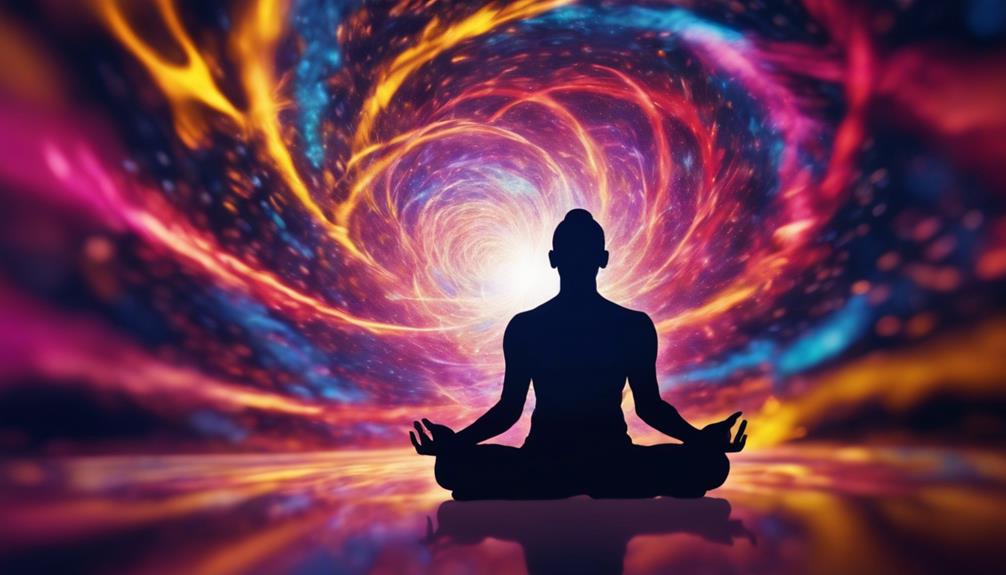
The ongoing global awakening towards higher awareness is a transformative shift impacting individuals and societies worldwide. This global awakening signifies a monumental energy shift as Earth evolves into its fifth-dimensional self, fostering a heightened awareness and interconnectedness.
The rising of consciousness isn't isolated but rather a universal phenomenon that transcends borders and cultures, emphasizing unity and collective evolution. As humanity moves from a third-dimensional reality to a fifth-dimensional existence, the current global awakening serves as a pivotal moment in our energetic evolution.
This shift towards higher awareness beckons individuals to deepen their connection to the collective energy of humanity, fostering a sense of oneness and harmony on a global scale. Embracing this wave of awakening allows for profound personal growth and a broader perspective that extends beyond the confines of the individual self.
The energy of this global awakening propels us towards a brighter future filled with unity consciousness and a shared vision of peace and love.
Illusion of Physical World

Exploring the depths of the physical world reveals profound insights into the nature of reality and the essence of spiritual energy. Quantum mechanics, a field of study that deals with the behavior of particles at the smallest scales, showcases that physical matter is primarily energy, highlighting the illusion of the physical world. This understanding challenges traditional views and emphasizes the energetic nature of the material world.
The concept of the illusion of the physical world suggests that what we perceive as solid and tangible is, in fact, a manifestation of energy with immense potential waiting to be harnessed. The observer effect and quantum entanglement further dive into this notion, providing a glimpse into the energetic nature of reality.
Navigating Awakening Process

Beginning on your awakening journey is a deeply personal and transformative experience that unfolds uniquely for each individual. As you navigate through this profound process, remember that the universe guides us in mysterious ways, leading us towards higher consciousness and spiritual growth.
Here are some key points to keep in mind as you commence on your awakening journey:
- Awakening Begins: The initial spark of awakening often arises unexpectedly, igniting a desire for deeper understanding and connection to the spiritual domain.
- Guidance Along the Way: Trust in the signs and synchronicities that present themselves, as they serve as a compass guiding you towards enlightenment.
- Sign of a Spiritual Shift: Embracing the challenges and revelations that come with awakening is a clear sign of your soul's readiness to evolve and expand.
Embrace this transformative journey with an open heart and mind, knowing that each step taken brings you closer to alignment with your true self.
Frequently Asked Questions
How Do You Describe Spiritual Energy?
You describe spiritual energy as a subtle, gentle vibration or tingling sensation. It feels warm, comforting, and soothing, like a flow of positive energy. Some describe it as expanded awareness or a sense of connection to something greater.
What Does a Spiritual Experience Feel Like?
A spiritual experience feels like a profound calmness embracing you, a warm energy gently coursing through your being, and a sense of unity with all. You might notice tingling sensations, heightened awareness, and deep emotional clarity.
What Are the Symptoms of Spiritual Awakening?
You feel a shift within, questioning beliefs, sensing synchronicities, and feeling disconnected. Relationships transform, intuition heightens, and you seek authenticity. The call to serve grows stronger, déjà vu moments occur, habits change, and empathy deepens.
Can People Sense Your Energy?
You can sense your energy. Others pick up on your emotions, attention, and subtle energy from living cells. Understanding chi and emotional cues helps you grasp how people perceive your energy. Quieting your energy is key.
Conclusion
As you explore further into the domain of spiritual energy, you'll begin to uncover the mysteries of the universe.
The sensations you feel will steer you on a journey of self-discovery and enlightenment.
Embrace the unfamiliar, trust your intuition, and let the energy flow through you.
The path ahead may be uncertain, but the possibilities are endless.
Keep investigating, keep expanding, and keep experiencing the incredible power of spiritual energy.
Meet Kiran, the guiding light of wisdom behind the empowering content at OurMindAndBody.com. As a talented and compassionate writer, Kiran weaves words with grace and insight, sharing profound knowledge and practical advice to inspire positive transformations in the lives of readers.
With a background in psychology and a deep-rooted passion for well-being, Kiran brings a unique blend of expertise and empathy to her writing. Her journey into the realm of mindfulness, meditation, and yoga began as a personal quest for self-discovery and healing. Having experienced the profound benefits of these practices firsthand, Kiran is committed to empowering others to embark on their own journeys of self-exploration and growth.
Spirituality
What Does Green Spiritual Energy Mean? Discover Now!
Mystical and transformative, green spiritual energy embodies love and healing, inviting you to explore its profound significance for growth and harmony.

Discover the spiritual depth of green energy embodying love, healing, and heart connection for growth and harmony. Immerse yourself in the profound meaning behind this nurturing aura, symbolizing compassion and renewal in personal and spiritual domains, fostering balance and well-being. Uncover how this energy guides individuals towards self-love, empathy, and harmony with nature, enhancing emotional stability and inner peace. Explore the significance of the heart chakra and its role in healing, empathy, and personal development for a fulfilling life. The green aura holds transformative powers that can illuminate your journey to spiritual growth and emotional fulfillment.
Key Takeaways
- Represents the heart chakra, embodying love, compassion, and healing energy.
- Fosters growth, renewal, and balance between physical and spiritual aspects.
- Nurturing, empathetic, and drawn to nature's beauty.
- Promotes personal development, self-love, and emotional stability.
- Encourages compassion, harmony, and connection to nature for a fulfilling life.
Symbolism of Green Aura
Green aura symbolism revolves around the heart chakra, embodying love, compassion, and healing energy. When your aura shines green, it signifies a deep connection to the heart center, radiating warmth and understanding. This color represents the balance between the physical and spiritual aspects of your being, fostering growth and renewal within.
Individuals with a green aura are often nurturing and empathetic, drawn to nature's beauty and tranquility. Your spiritual energy in shades of green symbolizes not only fertility and hope but also the cycle of life's transformations. The heart chakra, associated with this color, opens you to love, forgiveness, and acceptance, promoting harmony in relationships and self-healing.
Embracing your green aura means embracing peace, growth, and a profound sense of spiritual rejuvenation. Allow the energy of the heart chakra to guide you towards a life filled with love, compassion, and inner balance.
Characteristics of Green Energy

Green spiritual energy embodies qualities of growth, balance, and renewal in your spiritual journey. It symbolizes the heart chakra, encouraging compassion, love, and healing energy within you.
Embracing green energy fosters harmony with nature, inner peace, and emotional stability in your life.
Green Energy Attributes
Representing qualities of growth, renewal, and harmony, green spiritual energy embodies a connection to the heart chakra and promotes compassion and healing.
Green auras emanating from this energy signify a deep connection to nature and the Earth, fostering a sense of balance and spiritual growth. The heart chakra, associated with green energy, encourages feelings of compassion, love, and empathy towards oneself and others, leading to inner peace and emotional stability.
Furthermore, green spiritual energy promotes personal development and self-love, nurturing a strong sense of well-being and harmony within. By aligning with the energy of the heart chakra, individuals can experience a heightened awareness of their interconnectedness with the environment, fostering environmental consciousness and a deep respect for the natural world.
In essence, green energy attributes encompass a holistic approach to spiritual growth, emphasizing the importance of compassion, harmony, and connection to nature in achieving a balanced and fulfilling life.
Spiritual Significance Insights
Exploring the spiritual significance insights of green energy reveals its profound connection to nature and its transformative impact on emotional well-being and harmony.
When it comes to green spiritual energy, there are key characteristics that hold significant importance:
- Green Aura: A green aura signifies harmony, growth, and balance in one's spiritual journey.
- Aura Colors Change: Witnessing your aura colors change to green can indicate healing and a deeper connection to nature.
- Associated with Heart Chakra: Green energy is closely associated with the heart chakra, fostering love, compassion, and emotional balance.
- Spiritual Awakening: Embracing green energy can lead to spiritual awakening and inner peace, enhancing one's spiritual growth.
- Emotional Balance: Incorporating green in your spiritual practices can help in promoting emotional balance and a sense of well-being.
Green Aura in Relationships
Within relationships, individuals with green auras exhibit a remarkable ability to provide unwavering support and nurturing qualities to their partners. Their loyalty and empathy create a strong foundation for meaningful connections.
Green aura individuals excel at offering emotional support, understanding their partner's needs, and fostering a sense of security within the relationship. Balancing the care they give to others with self-care is essential for maintaining healthy dynamics.
Prioritizing harmony, compassion, and open communication, those with green auras contribute to creating a safe and loving environment for growth and healing. Their presence in relationships often leads to deep connections and a profound sense of emotional fulfillment.
Interpreting Green Aura Meanings

Understanding the meaning of a green aura involves recognizing its connection to love, growth, and balance, as well as its ability to radiate compassion and healing energy. When interpreting a green aura, consider the following:
- Individuals with green auras are often nurturing, empathetic, and connected to nature.
- Green auras are linked to the heart chakra, symbolizing harmony, renewal, and spiritual awakening.
Dark green auras may suggest jealousy or unresolved emotional issues.
Bright green auras reflect inner peace, tranquility, and a strong connection to the heart chakra.
Interpreting a green aura involves acknowledging its positive traits like compassion, growth, and healing, while being mindful of potential challenges such as neglecting self-care.
Green auras can provide valuable insights into a person's personality traits, energy field, and overall well-being.
Role of Green Aura in Chakras

The green aura plays a significant role in the chakras, particularly in relation to the heart chakra's energy and its impact on emotional well-being and spiritual growth.
Linked to the heart chakra, the green aura symbolizes love, compassion, and emotional balance. Individuals with a green aura are often nurturing, empathetic, and deeply connected to their emotions. Balancing the heart chakra through green energy promotes harmony, forgiveness, and self-acceptance. This balance fosters healing, not only for oneself but also for others.
The presence of a green aura signifies a strong sense of empathy, a deep connection to nature, and a journey towards spiritual growth. People with a green aura are inclined towards nurturing others, fostering a sense of community, and aiding in emotional healing processes. Embracing the green aura's energy can lead to a more profound understanding of oneself and a heightened capacity for empathy and healing.
Impact of Green Aura on Personality

Individuals embodying a green aura often exhibit a nurturing and compassionate personality. People with a green aura prioritize emotional support and care for others, symbolizing a harmonious and balanced personality focused on healing and renewal. They're known to be loyal friends and empathetic partners in relationships, always offering a listening ear and a comforting presence. Balancing self-care while providing nurturing to others is pivotal for those with a green aura to maintain harmony in their lives.
- Nurturing Nature: Individuals with a green aura are inherently nurturing, always ready to provide care and support.
- Compassionate Demeanor: People with a green aura show compassion towards others, offering understanding and kindness.
- Healing Focus: The green aura signifies a focus on healing, both emotionally and spiritually.
- Balanced Personality: Those with a green aura exhibit a balanced personality, seeking equilibrium in all aspects of life.
- Emotional Support: Individuals with a green aura excel at providing emotional support, creating a safe space for others to express themselves.
Changing Aura Colors: Insights

To gain insights into changing aura colors, consider exploring the impact of different practices like meditation and energy healing. Auras change over time, reflecting shifts in one's emotional, mental, and spiritual well-being.
Individuals with a green aura, symbolizing growth and harmony, may notice fluctuations in their aura based on their experiences and inner balance. People with a green aura are often nurturing and empathetic, embodying qualities of renewal and a strong connection to nature.
The color of your aura is connected to your state of being, and incorporating practices such as meditation can help maintain or shift your aura colors. By focusing on self-care and balancing the act of nurturing others, individuals with a green aura can promote harmony within themselves and potentially influence the color of their aura.
Embracing Green Aura Healing

Embracing green aura healing can lead to profound transformations in your emotional and spiritual well-being. Green aura healing taps into the essence of compassion, nurturing your empathetic nature and fostering a sense of divine love within you.
By delving into the domain of green spiritual energy, you open yourself up to a world of healing possibilities that can enrich your life and those around you.
Here are some key benefits of embracing green aura healing:
- Enhanced Compassion: Green aura healing helps you cultivate a deeper sense of compassion towards yourself and others.
- Nurturing Nature: Embracing green aura healing nurtures your inner self, promoting self-care and emotional balance.
- Empathetic Transformation: Green aura healing encourages an empathetic nature, allowing you to connect more deeply with others.
- Healing Energies: Individuals with a green aura are often natural healers, emanating healing energies to those in need.
- Divine Love: Connecting with green spiritual energy opens your heart to the divine love that surrounds us, fostering harmony and growth in your spiritual journey.
Frequently Asked Questions
What Does the Color Green Symbolize?
Green symbolizes nature, growth, rebirth, health, and hope. It represents the cycle of birth, death, and rebirth with transformative properties. The color resonates with inner peace, spiritual awakening, and divine love, offering a sense of peace and harmony.
What Is the Rarest Aura Color?
The rarest aura color is white, symbolizing purity and spiritual enlightenment. Individuals with white auras have transcended earthly concerns, embodying a deep spiritual connection and high spiritual evolution. They radiate pure, positive energy and consciousness.
What Is the Color of the Healing Aura?
The color of the healing aura is green. It symbolizes balance, renewal, and harmony. Green spiritual energy signifies growth, compassion, and nurturing qualities. People with a green aura are often healers and empathetic individuals.
What Do the Colors Mean Spiritually?
Colors spiritually represent various aspects of life. Each has unique meanings and energies. Green symbolizes growth, healing, and balance. It encourages you to connect with nature, embrace change, and cultivate compassion. Allow green energy to guide your spiritual journey.
Conclusion
So, now you know all about green spiritual energy!
It's like a breeze of renewal, a wave of tranquility, and a burst of growth all wrapped into one magical color.
Embrace the power of the green aura and watch as your relationships blossom, your chakras align, and your personality shines brighter than ever before.
Get ready to tap into the abundant healing energy of green and let it transform your life in ways you never thought possible!
Meet Kiran, the guiding light of wisdom behind the empowering content at OurMindAndBody.com. As a talented and compassionate writer, Kiran weaves words with grace and insight, sharing profound knowledge and practical advice to inspire positive transformations in the lives of readers.
With a background in psychology and a deep-rooted passion for well-being, Kiran brings a unique blend of expertise and empathy to her writing. Her journey into the realm of mindfulness, meditation, and yoga began as a personal quest for self-discovery and healing. Having experienced the profound benefits of these practices firsthand, Kiran is committed to empowering others to embark on their own journeys of self-exploration and growth.
-

 Personal Growth2 months ago
Personal Growth2 months agoThe Power Of Kindness: Cultivating Happiness, Connection, And Personal Growth
-

 Meditation1 day ago
Meditation1 day agoUnderstanding Spiritual Attacks: Types, Signs, And Protection
-
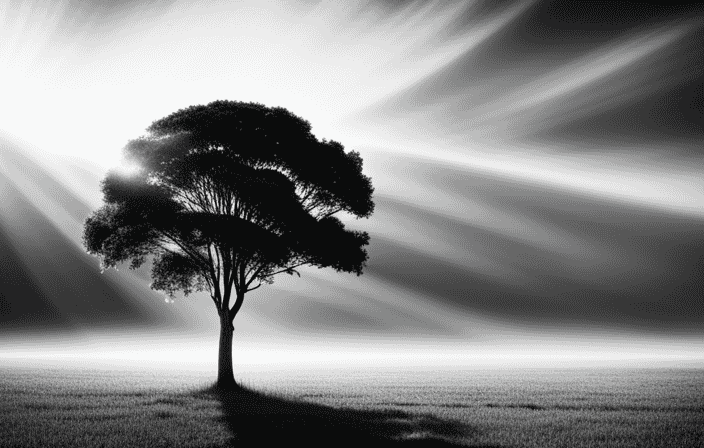
 Aura1 week ago
Aura1 week agoUnderstanding The Grey Aura: Balance, Neutrality, And Personal Growth
-

 Spirituality3 months ago
Spirituality3 months agoThe Power Of Spiritual Connection: Definition, Importance, And Ways To Achieve
-
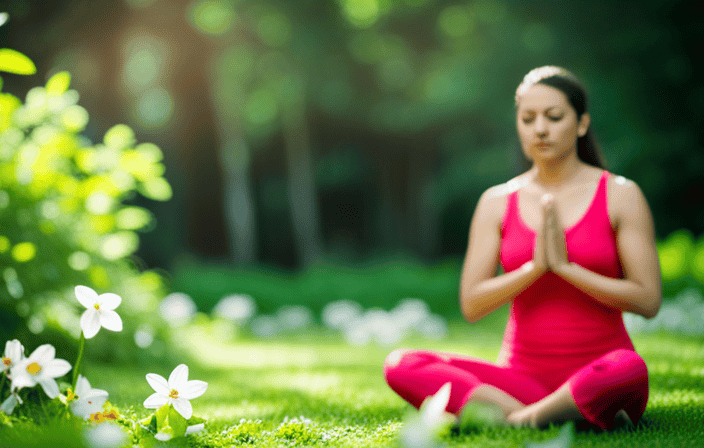
 Spirituality3 months ago
Spirituality3 months agoConnecting Spirituality And Daily Life: Embracing Universal Values
-
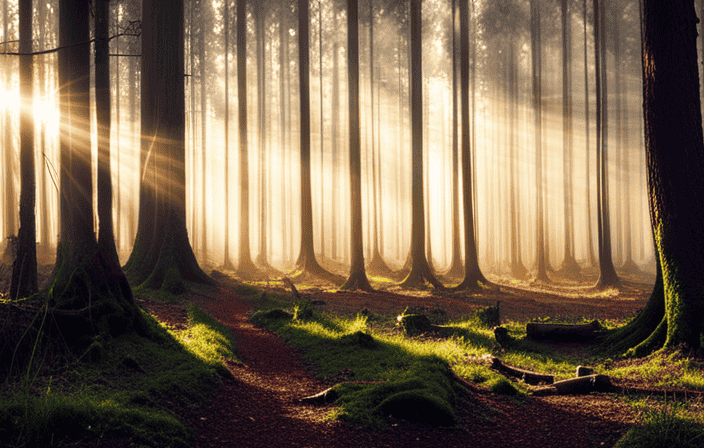
 Spirituality3 months ago
Spirituality3 months agoThe Mystical Realms: Exploring Spiritual Dimensions
-

 Meditation3 weeks ago
Meditation3 weeks agoThe Symbolic Significance Of Sand Dollar: Spiritual Meanings And Cultural Connections
-

 Spirituality3 months ago
Spirituality3 months agoThe Power Of Spiritual Cleansing: History, Benefits, Techniques, And Personal Experiences











